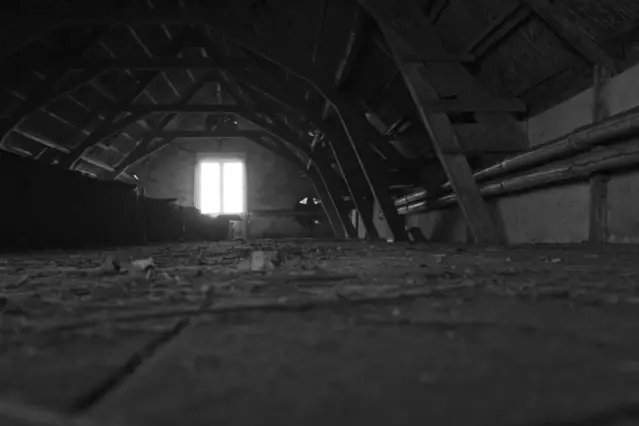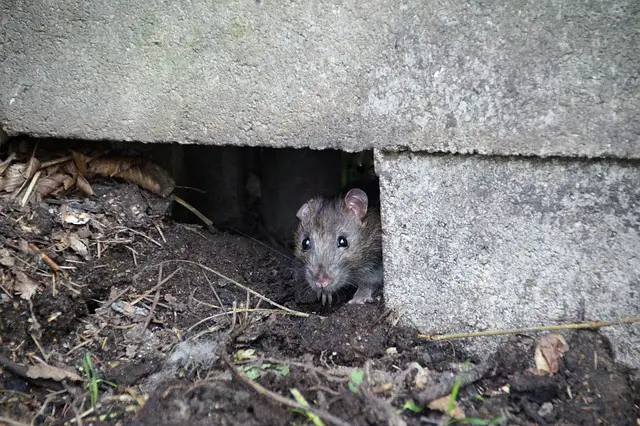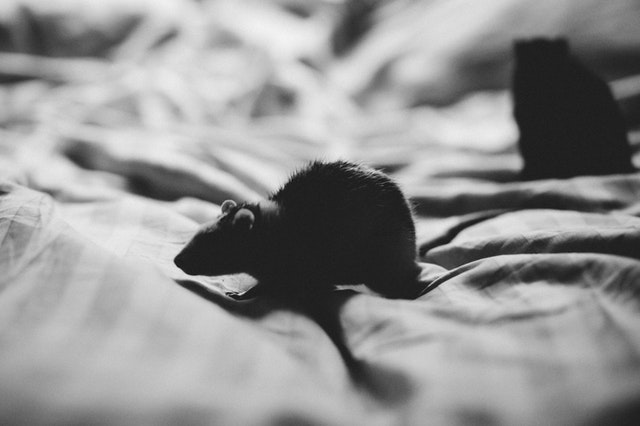How do you identify mouse droppings?
It can be hard to tell mouse droppings from rats or other rodent droppings. So, what do mouse droppings look like? Mouse droppings are small pellet-shaped and dark brown in color. You can tell if mouse droppings are fresh by the color. Newer mouse droppings will be shinier and darker while older droppings will look dry and chalky.
Size is critical for identifying mouse droppings. Mouse droppings are much smaller – an eight to a quarter of an inch – than rat droppings – half of an inch in length. Rat droppings are larger and wider than mouse droppings.
Suggested articles:
How many droppings does a mouse produce?
Mouse droppings are the early sign there is indeed a mouse in your house. A single mouse can produce up to 100 droppings every day. Fresh droppings show that the mouse infestation is active and ongoing.
What is the consistency of mouse droppings?
Mouse droppings have the consistency of putty when pressed and start to become hard several hours after they are deposited. You can use a stick to check, but you should never touch mouse droppings without gloves. Old droppings crumble easily when pressed and are dusty-looking. Very old mouse poop can be moldy.
Where would I find mouse droppings?
You need to inspect your home to find mouse droppings. Most mouse droppings are generally found near the nesting area of the mouse. If you don’t want to hunt for mouse droppings you might want to hire a pest control professional.

Do mice poop everywhere they go?
Mice can poop everywhere they go:
- Kitchen pantries and cabinets
- Air vents and around plumbing
- Any closets or food storage areas
- Holes in walls
- Areas around water heaters and appliances
- Attics
What do you do if you find mouse droppings?
The first thing to do if you find mouse droppings is to get rid of them. Don’t vacuum or sweep mouse poop. If you vacuum or sweep mouse droppings, you could force virus particles into the air where they could be inhaled, spreading disease.
Never touch mouse droppings. Use latex, vinyl or rubber gloves, disposable sponges and paper towels. Use a disinfectant and clean the area with paper towels or disposable rags. Collect the mouse droppings into a plastic garbage bag. Seal it and place it outside in a trash bin.
If you find new droppings within the next couple of days, you might have a mice infestation.
Related post: Why Mice Come Into Your House in the Summer?
What can be mistaken for mouse droppings?
Rat droppings can be mistaken for mouse droppings. Mouse droppings are significantly smaller in size. A mouse droppings are around the size of grains of rice while rat droppings are about half an inch in length.
Cockroach droppings can be mistaken for mouse droppings. The size of cockroach droppings is about 2/8 of an inch and black. Squirrel droppings can also be mistaken for mouse droppings. The size of squirrel droppings is 3/8 of an inch. Bat droppings are similar to mouse droppings too. The size of bat droppings is similar to mouse droppings.

How hazardous are mouse droppings?
According to the Centers for Disease Control and Prevention, mouse droppings are dangerous. Mice can transmit 35 different diseases through their waste. For that reason, it’s critical to properly remove mouse feces from your home. Improper clean-up of mouse feces could spread dangerous diseases like Plague, Hantavirus, Salmonellosis, and more.
Can you get sick from mouse droppings?
Unfortunately, you can get sick from mouse droppings. Mouse feces can spread bacteria, trigger allergic reactions and contaminate your food. Dry mouse fecal matter can be hazardous to those who breathe it in.
Mice spread 35 different diseases, including:
- Bubonic Plague – Caused by bacteria carried by mice. Generally, spread by an infected mouse.
- Rat Bite Fever – Carried by bacteria that live on some mice. It can also be transmitted by consuming food or water contaminated by mice. On rare occasions, Rat Bite Fever can be transmitted through mouse bite.
- Hantavirus – Deer mice and the white-footed mouse are reservoirs of hantaviruses. The deer mice is the primary carrier of the virus in North America. Mice shed the virus in the droppings, saliva and urine. Hantavirus is spread through airborne transmission as mice droppings are stirred up. Mice can spread it by biting humans. Scientists believe that many people contract hantavirus if they touch something that has been contaminated with mice droppings, saliva or urine.
- Salmonellosis – Spread by mouse feces, especially through the consumption of contaminated food.
Can mouse poop give you a fever?
If you have been around mice droppings and have signs and symptoms of fever, muscle aches, chills, or difficulty breathing, see immediate medical attention.
What are the chances of getting sick from mouse droppings?
Mice can cause 35 types of illnesses. Some mouse-borne diseases are rarer than others. For example, the chance of contracting Hantavirus Pulmonary Syndrome is 1 in 13,000,000. You are more likely to get struck by lightning which is 1 in 10,000,000.
How long does Hantavirus live in mouse droppings?
The Hantavirus can live for several days in mouse droppings.
Interesting facts about mice
Mice originated in India and Southeast Asia and spread through Europe many centuries ago. House Mice arrived in the Americas in the early sixteenth century, carried on the ships of explorers, traders and colonists. The House Mouse arrived in North America about one hundred years later with English colonists and French fur traders.
Mice are well-adapted for living year-round in houses, food establishments – like restaurants – and other structures. Homeowners are more likely to notice mice during winter, following their autumn migration indoors in search of warmth, food and shelter. Once mice become established inside a home, they can be extremely difficult to control.
The greatest economic loss from mice is because of contamination or damage not from how much they eat. Food, clothing, furniture, personal items, books and many other household items are contaminated by their droppings and urine or damaged by their gnawing.
Mice gnaw through electrical wiring, which can cause fires and failure of freezers, clothes dryers and other appliances. According to the Centers for Disease Control and Prevention, mice can transmit over 35 diseases, most notably Tularemia, salmonellosis (bacterial food poisoning), when food is contaminated with infected rodent feces. Other diseases include rickettsialpox, lymphocytic choriomeningitis, leptospirosis, ratbite fever, tularaemia, Lyme disease and dermatitis caused by the bites of mites from the mice. Hantavirus (pulmonary syndrome) is another danger that is becoming more common.
Compared to rats, mice forage only short distances from their nest, usually not more than 5 to 10 meters. When food and shelter are adequate, their foraging range may be only a few feet, and they prefer to travel adjacent to walls and other edges. For this reason, mousetraps should be placed in areas where mouse activity is most apparent.
Mice prefer cereal grains and seeds in their diet. They are sporadic in their feeding, especially when there are multiple food sources are available. In these situations, mice may make up to 30 visits to different food sources each night, taking as little as 0.15 grams of food at each site. Food sites may vary from night to night, but some sites where the mouse feels safe can be nightly favorites. When food sources are limited, mice may visit the food source 200 or more times each night, but only 20 milligrams may be taken during visits. In all, the average mouse will consume only about 4 grams or about 1/10th of an ounce of food each night.
Mice can live in a lab or as a pet for up to three years but usually only live for about five months in the wild, mostly because of predators, such as cats, snakes and foxes.
Mice have a good sense of smell, taste and hearing; however, they have poor vision and are color-blind. They are nocturnal and are seldom seen during daylight unless they are at high densities.
Mice reach sexual maturity at 6 to 10 weeks of age and give birth to litters between 6 and 10 times in a single year under suitable conditions. Gestation is 19-21 days, and mothers can re-mate immediately after giving birth. The average litter size is 5 to 6 but can be as high as 13. There’s no specific season when mice breed. Mice will have litter year-round. Both males and females are ready to mate within the first 50-days of life.
Mice can reach plague proportions in just one season. One breeding pair can produce 500 mice over a five-month period under ideal conditions.
Mice can dig, vertically jump up to 40 cm, fall at least 2.5 m without injury, and squeeze through openings as small as 6 mm wide. Depending on soil type, mouse burrows can withstand heavy rainfall. Only prolonged flooding affects mice in the field.
As adults, mice can consume about 2-3 grams of food per day and are omnivorous, in the field surviving mainly on grass seeds, grains and legumes, insects, snails, earthworms, plant tissue and some fungi, when available.
Usually, mice do not need to drink as they can obtain sufficient moisture from their food. Mice aren’t necessarily killed by cold weather and frosts, but it may restrict population growth.
Scientific Name of the Common House Mouse: Mus Musculus
Description of the Common House Mouse: House mice range from 65 to 95 mm in length from the tip of their nose to the end of their body; the tails of the House Mice are 60 to 105 mm long.
Fur color ranges from light brown to black, and they usually have white or tan-hued undersides. Their long tails have very little fur and are scaly in texture.
House mice will generally have longer tails and darker fur when living close by or with humans. The weight of the common house mouse ranges from 12 to 30 grams. Domesticated forms of mice have been bred and vary in color from white to black or with spots.
Common House Mouse Range and Reproduction: Mus Musculus is found all across North America, wherever humans are found. This non-native species can be found in populated areas throughout the state of Arizona. House mice nest behind rafters, in woodpiles, storage areas or any hidden spot near a food source. They build nests from rags, paper, or other soft substances and line them with finer shredded material.
The common house mouse has an almost incomprehensible reproductive potential. Females will produce between five and 14 litters per year, ranging in size between three and 12, which means that the range of offspring produced from a single female is between 15 and 168 in a single year.
Health Information about the House Mouse: Mice are agricultural pests when dwelling in farming locales; they consume and contaminate stored human food with their droppings in residential settings. In addition, they contribute to the widespread of diseases such as bubonic plague, murine typhus, rickettsialpox, tularemia, and food poisoning (Salmonella). Recent research has also shown that they carry a virus–the mouse mammary tumor virus (MMTV)–that may contribute to breast cancer in humans. (Indik et al., 2005; Stewart et al., 2000)
Important Facts on the Common House Mouse:
- House mice can run up to speeds of 8 miles per hour, are good climbers, jumpers, and swim well. Despite this, mice rarely travel more than 50 feet from their established nests or homes.
- House mice are nocturnal, although some are active during the day in human dwellings.
- The house mouse is even found in inhospitable environments that would be nearly impossible to survive without the presence of human accommodations.
- In homes infested with common house mice, there is almost always a musky odor, hence the Musculus Latin name.




